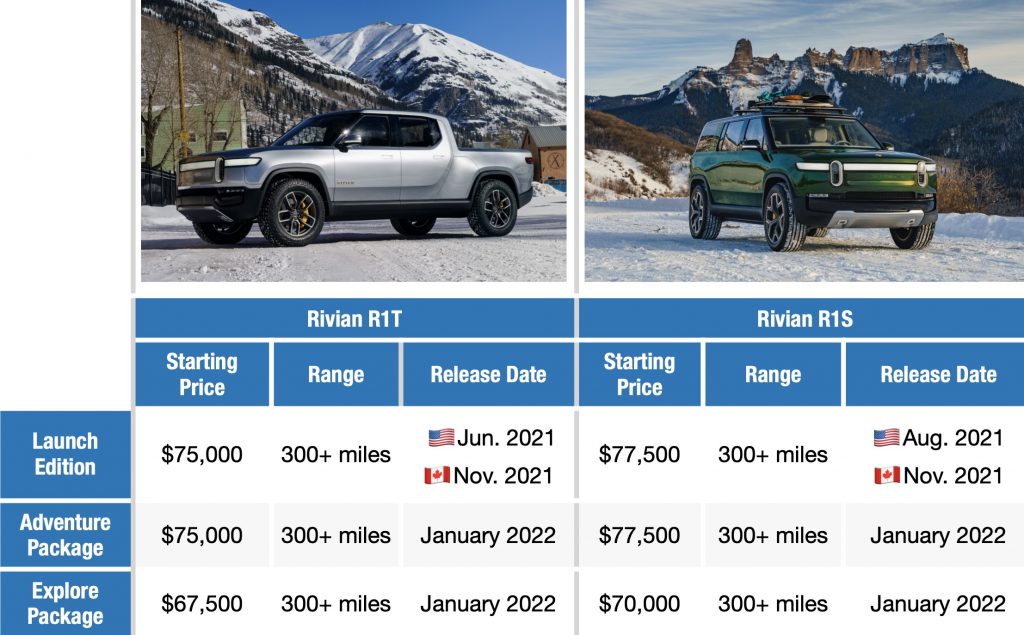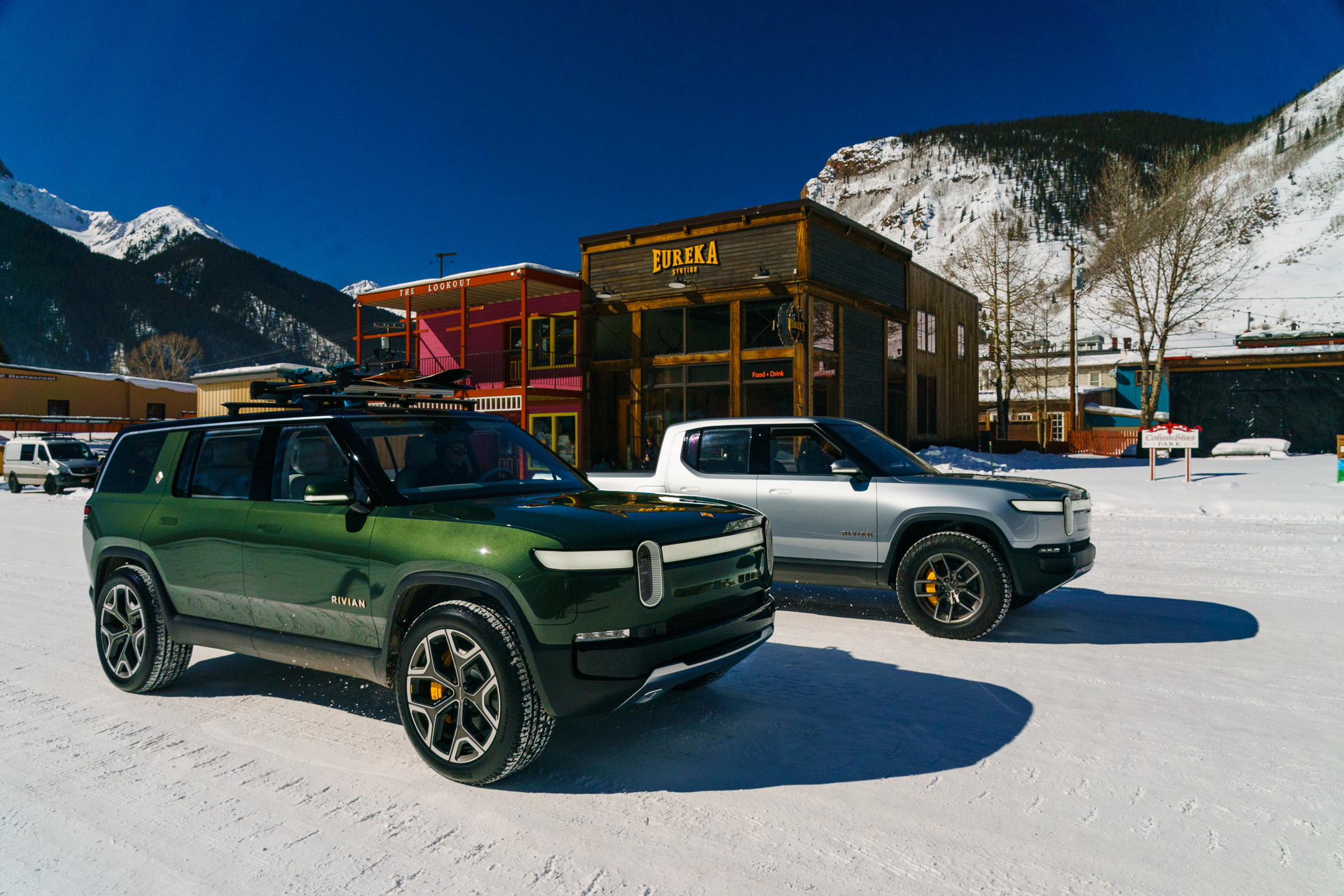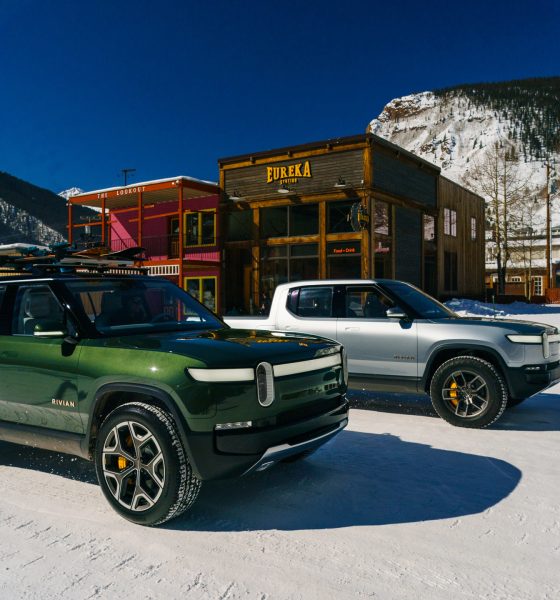Rivian revealed the prices and release dates for its R1T electric pickup truck and the R1S SUV. The company also announced that its configurator would be available to preorder holders on November 16. Rivian will send preorder holders an email to unlock early access to its configurator, which will be accessible to the public by November 23.
Launch Edition
Rivian will kick off deliveries in the Unites States with its limited R1T and R1S Launch Edition on June 2021 and August 2021, respectively. It plans to start R1T and R1S Launch Edition deliveries in Canada by November 2021. The company encourages preorder holders who are interested in acquiring the Launch Edition vehicles to reserve one as early as possible because supplies will be limited.
The R1T and R1S Launch Edition will come with Rivian’s premium Adventure Package and special interior badging. Launch Edition vehicles will also feature a unique paint option called “Launch Green,” as well as 20” All-Terrain or 22” Sport Wheels at no additional cost. The debut vehicles will offer an estimated 300+ mile range, suggesting that the vehicles will feature Rivian’s 135 kWh battery pack.

Rivian’s Equipment Packages
Rivian will be offering two equipment packages in its configurator named “Adventure” and “Explore.” Both equipment packages feature the same drivetrain and quad-motor configuration, as well as independent air suspension, active damping, and electro-hydrualic roll control.
They both also come with a panoramic all-glass roof, vegan leather seats, WiFi and 4G capabilities, and a 1000-lumen flashlight on the driver’s side door. Each package does have its own defining features.
- Adventure Package
The Adventure Package is essentially the Launch Edition minus the the special Launch Green paint option, interior branding, and free wheel upgrade. It comes standard with Rivian’s Off-Road Upgrade, which features a reinforced underbody shield and an on-board air compressor. A powered tonneau cover is also included, as well as the company’s “Gear Guard” remote monitoring system.
Inside the vehicle, the Adventure Package comes with heated and cooled perforated vegan seats, a cabin with natural-grained ash wood, and the electric truck maker’s Rivian Elevation 360° audio system featuring a removable Bluetooth speaker. Deliveries for the R1T and R1S Adventure Package that are not part of the Launch Edition will start January 2022.
- Explore Package
Rivian’s Explore Package is the most affordable trim listed by the electric car maker. It features a “sport interior” with matte black finishes throughout the cabin and heated vegan leather seats. The Explore Package also comes with a standard surround sound audio system.
Unlike the Adventure Package, the tonneau cover of the Explore Package is manual. Although, the tonneau cover’s panels are designed to lock together to double as a camp table. Rivian will start delivering its Explore Package trim will on January 2022.
Rivian hasn’t revealed all the specs for the R1T EV pickup truck or the R1S SUV. However, the clean energy automaker did share some information about the R1T and R1S vehicles battery packs and driver-assist system, named Rivian Driver+. More details about the specs and features of the R1T and R1S might be released once the company’s configurator is live later this month.

News
Tesla FSD fleet is nearing 7 billion total miles, including 2.5 billion city miles
As can be seen on Tesla’s official FSD webpage, vehicles equipped with the system have now navigated over 6.99 billion miles.

Tesla’s Full Self-Driving (Supervised) fleet is closing in on almost 7 billion total miles driven, as per data posted by the company on its official FSD webpage.
These figures hint at the massive scale of data fueling Tesla’s rapid FSD improvements, which have been quite notable as of late.
FSD mileage milestones
As can be seen on Tesla’s official FSD webpage, vehicles equipped with the system have now navigated over 6.99 billion miles. Tesla owner and avid FSD tester Whole Mars Catalog also shared a screenshot indicating that from the nearly 7 billion miles traveled by the FSD fleet, more than 2.5 billion miles were driven inside cities.
City miles are particularly valuable for complex urban scenarios like unprotected turns, pedestrian interactions, and traffic lights. This is also the difference-maker for FSD, as only complex solutions, such as Waymo’s self-driving taxis, operate similarly on inner-city streets. And even then, incidents such as the San Francisco blackouts have proven challenging for sensor-rich vehicles like Waymos.
Tesla’s data edge
Tesla has a number of advantages in the autonomous vehicle sector, one of which is the size of its fleet and the number of vehicles training FSD on real-world roads. Tesla’s nearly 7 billion FSD miles then allow the company to roll out updates that make its vehicles behave like they are being driven by experienced drivers, even if they are operating on their own.
So notable are Tesla’s improvements to FSD that NVIDIA Director of Robotics Jim Fan, after experiencing FSD v14, noted that the system is the first AI that passes what he described as a “Physical Turing Test.”
“Despite knowing exactly how robot learning works, I still find it magical watching the steering wheel turn by itself. First it feels surreal, next it becomes routine. Then, like the smartphone, taking it away actively hurts. This is how humanity gets rewired and glued to god-like technologies,” Fan wrote in a post on X.
News
Tesla starts showing how FSD will change lives in Europe
Local officials tested the system on narrow country roads and were impressed by FSD’s smooth, human-like driving, with some calling the service a game-changer for everyday life in areas that are far from urban centers.

Tesla has launched Europe’s first public shuttle service using Full Self-Driving (Supervised) in the rural Eifelkreis Bitburg-Prüm region of Germany, demonstrating how the technology can restore independence and mobility for people who struggle with limited transport options.
Local officials tested the system on narrow country roads and were impressed by FSD’s smooth, human-like driving, with some calling the service a game-changer for everyday life in areas that are far from urban centers.
Officials see real impact on rural residents
Arzfeld Mayor Johannes Kuhl and District Administrator Andreas Kruppert personally tested the Tesla shuttle service. This allowed them to see just how well FSD navigated winding lanes and rural roads confidently. Kruppert said, “Autonomous driving sounds like science fiction to many, but we simply see here that it works totally well in rural regions too.” Kuhl, for his part, also noted that FSD “feels like a very experienced driver.”
The pilot complements the area’s “Citizen Bus” program, which provides on-demand rides for elderly residents who can no longer drive themselves. Tesla Europe shared a video of a demonstration of the service, highlighting how FSD gives people their freedom back, even in places where public transport is not as prevalent.
What the Ministry for Economic Affairs and Transport says
Rhineland-Palatinate’s Minister Daniela Schmitt supported the project, praising the collaboration that made this “first of its kind in Europe” possible. As per the ministry, the rural rollout for the service shows FSD’s potential beyond major cities, and it delivers tangible benefits like grocery runs, doctor visits, and social connections for isolated residents.
“Reliable and flexible mobility is especially vital in rural areas. With the launch of a shuttle service using self-driving vehicles (FSD supervised) by Tesla in the Eifelkreis Bitburg-Prüm, an innovative pilot project is now getting underway that complements local community bus services. It is the first project of its kind in Europe.
“The result is a real gain for rural mobility: greater accessibility, more flexibility and tangible benefits for everyday life. A strong signal for innovation, cooperation and future-oriented mobility beyond urban centers,” the ministry wrote in a LinkedIn post.
News
Tesla China quietly posts Robotaxi-related job listing
Tesla China is currently seeking a Low Voltage Electrical Engineer to work on circuit board design for the company’s autonomous vehicles.

Tesla has posted a new job listing in Shanghai explicitly tied to its Robotaxi program, fueling speculation that the company is preparing to launch its dedicated autonomous ride-hailing service in China.
As noted in the listing, Tesla China is currently seeking a Low Voltage Electrical Engineer to work on circuit board design for the company’s autonomous vehicles.
Robotaxi-specific role
The listing, which was shared on social media platform X by industry watcher @tslaming, suggested that Tesla China is looking to fill the role urgently. The job listing itself specifically mentions that the person hired for the role will be working on the Low Voltage Hardware team, which would design the circuit boards that would serve as the nervous system of the Robotaxi.
Key tasks for the role, as indicated in the job listing, include collaboration with PCB layout, firmware, mechanical, program management, and validation teams, among other responsibilities. The role is based in Shanghai.
China Robotaxi launch
China represents a massive potential market for robotaxis, with its dense urban centers and supportive policies in select cities. Tesla has limited permission to roll out FSD in the country, though despite this, its vehicles have been hailed as among the best in the market when it comes to autonomous features. So far, at least, it appears that China supports Tesla’s FSD and Robotaxi rollout.
This was hinted at in November, when Tesla brought the Cybercab to the 8th China International Import Expo (CIIE) in Shanghai, marking the first time that the autonomous two-seater was brought to the Asia-Pacific region. The vehicle, despite not having a release date in China, received a significant amount of interest among the event’s attendees.










